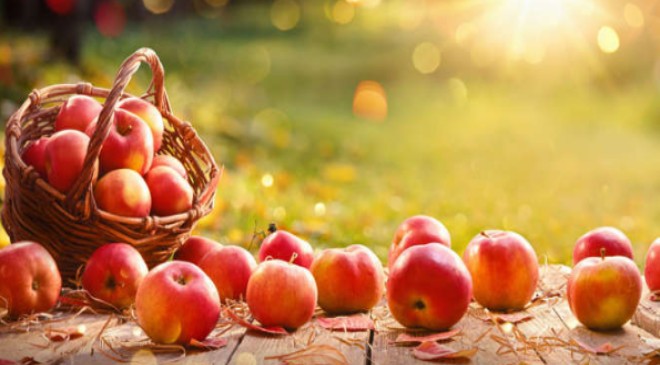
If you’ve fallen in love with gardening, you’re not alone. Interest in everything from nurturing a few houseplants to growing your own food has skyrocketed the past few years. But if you’re ready to branch out (yeah, we said it!) beyond growing your own tomatoes, herbs, and flowers, you may want to consider fruit trees. Believe it or not, you can grow some type of fruit tree in most parts of the country from USDA Hardiness Zones 3 to 11 (find your zone here). Your local university coop extension service can help you choose the best variety to grow in your area. Better yet, some fruit trees can be grown in pots on your patio and brought indoors for winter if they’re not cold-hardy; just be sure your tree receives plenty of bright light from a south-facing window or LED grow light.
Most fruit trees need full sun to thrive and produce fruit, which means you need a spot that receives at least six hours of direct sunlight per day. Dig a hole about 2 to 3 times as wide as the container, but only as deep. Place the tree in the hole, and make sure the root flare, where the trunk begins to taper out, is above ground, not buried (a common mistake!). Replace soil, pat firmly, water well, being sure to give your tree a drink during dry spells as it’s getting established its first year or two.
Here’s one more important thing to remember: You must plant two or more varieties of many types of trees including apples, plums, and pears, and sweet cherries in order for pollination to occur; otherwise, you won’t get any fruit! Some trees are self-pollinating (also called self-fertile), but you’ll increase the size of your crop if you add another tree for pollination. Others are sold with multiple varieties grafted on the same tree so they’re self-fertile. If you’re not sure about what you need, talk to the nursery or read the online descriptions to figure out how many trees are required for fruit to develop.

) Apple
Zones 3 to 10
Varieties to try:
Three-in-One Combo: Three varieties grown together and grafted on one tree for small gardens.Gala: Crisp sweet-tart variety with a firm crunchy texture.

2) Cherry
Zones 4 to 9
Varieties to try:
Stella: Sweet cherries that bear fruit the first year and are self-fertile.Montmorency: Sour cherries that grow better in colder climates.

3) Citrus
Zones 8 to 11
Varieties to try:
Meyer Lemon: Cross between a lemon and orange; grows well in pots indoors in cold climates.Key Lime: Deep green fruit that’s self-fertile; grows well in pots indoors in cold climate.

4) Fig
Zones 7 to 11
Varieties to try:
Chicago Hardy: Cold-hardy fig that’s self-fertile.Brown Turkey: Yields a small crop in spring, a larger crop in fall; self-fertile.

5) Olive
Zones 8 to 11
Varieties to try:
Arbequina: Spanish olive that’s self-fertile; does well in pot indoors in cold climates.Frantoio: Italian variety that’s self-fertile and often used for making oil; does well in pot indoors.

6) Peach
Zones 5 to 9
Varieties to try:
Elberta: Classic red-blushed freestone variety that’s super-sweet and self-fertile.Reliance: Late maturing variety that’s extra cold-hardy; self-fertile.

7) Pear
Zones 3 to 9
Varieties to try:
Three in One: Three varieties grafted together on one tree; self-fertile.Bosc: Sweet pear for a fall harvest; needs a pollinator.

8) Pomegranate
Zones 7 to 11
Varieties to try:
Russian Red: Cold-hardy type that’s self-fertile.Angel Red: Large showy blooms and juicy fruit; self-fertile.































